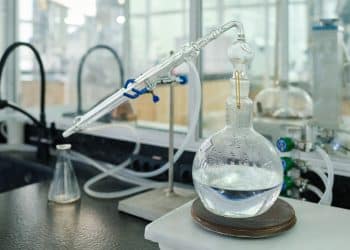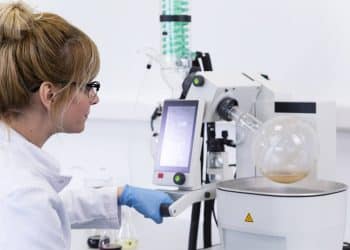The cannabis extract market has blossomed in recent years, reaching a valuation of $5 billion in 2018 alone, according to Verified Market Research. Extracts show zero signs of slowing down anytime soon and could reach a whopping $23 billion in total market value by 2026.
Most extracts undergo winterization, which strips away lipids from the final product. Extracts then undergo a color removal process to provide a desirable amber hue by removing chlorophyll. Extractors may use distillation or chromatography to further refine concentrates. This process can be both long and complicated.
That said, there is another solution for post-processing of extracts. Enter membrane filtration, also known as organic solvent nanofiltration (OSN), which streamlines the filtration process. According to Buonomenna and Bae [1], OSN “allows separations of organic mixtures down to a molecular level by simply applying a pressure gradient over a membrane and recovery with possibility of reuse of the organic solvents.” Membrane filters are physical barriers with pores sized so small that pressure must be applied to push liquid through for filtration.
This filtration process allows extractors to create perfect final products with just a single step that eliminates the need to winterize, filter, concentrate, and decolorize. The crude extract (often using ethanol) is subjected to filtration rather than other processes. According to Evonik, creator of Duramem™ Membranes, membrane filtration adds product value, decreases cost, shortens processing time, and is also friendly to the environment. The company manufactures membrane filters with pore structures sized between 200-900 Daltons. These filters are capable of removing polymeric impurities, separating monomers and dimers, fractionating molecules, and decolorizing.
The company notes that the filters “perform best in apolar solvents,” such as hexane and toluene. However, they are also stable in alcohols like ethanol and methanol. The membranes are not suitable for water mixtures. Filters are wound in cylinders for commercial applications. Temperature, pressure, and pH must also be considered when using OSN. The solvent can be recycled.
Photo courtesy of Rick Proctor, Unsplash
Reference
Buonomenna MG, Bae J. Organic solvent nanofiltration in pharmaceutical industry. Separation & Purification Reviews. 2014;44(2):157–182. doi:10.1080/15422119.2014.918884












